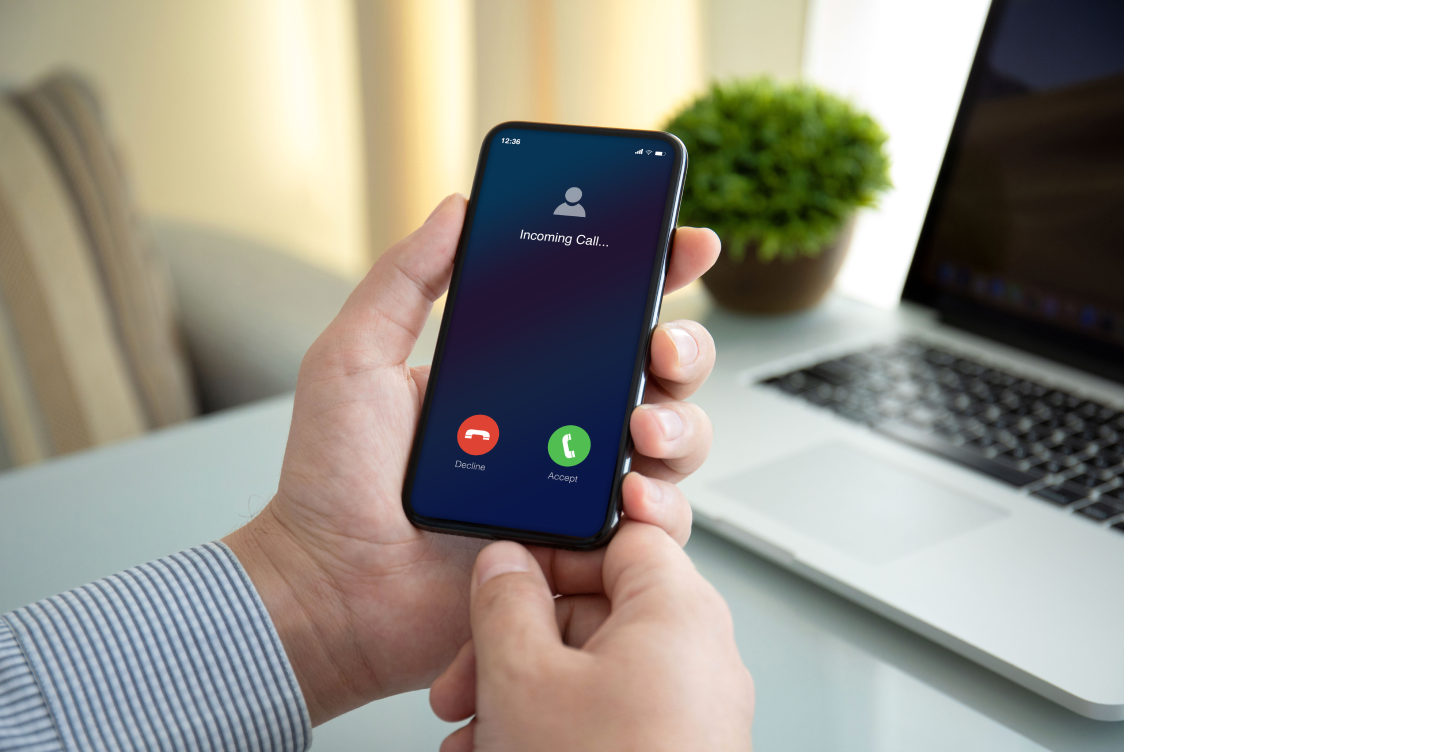What is branded calling?

Time to read: 6 minutes
What is Branded Calling?
Four billion—that’s the number of robocalls U.S. consumers receive each month. For context, that’s approximately 1-2 phone calls every second.
So it’s no surprise why most customers pause before answering an unknown phone call. After all, with no context or caller ID, how else can they tell if there’s a legitimate business or a bona fide scam artist on the other line? The answer is with branded calling.
Branded calling, also referred to as branded caller ID, is helping organizations rebuild the reputation and reliability of voice call technology that malicious actors have tarnished. For customers, it’s forging a new era of engagement with brands they can trust.
In this post, we’ll explore the ins and outs of branded caller ID, along with the benefits of signing up for a Branded Calling Display Name with Twilio Voice.
Branded caller ID explained
Branded caller ID is a feature that allows businesses to add a display name, logo, and call reason to outbound voice calls made to cell phones.
Rather than something lackluster like “Unknown Caller” in the caller ID field, branded calling enables organizations to “brand” their caller ID with details a customer can instantly identify, recognize, and trust.
Branded caller ID will soon become one of the key components of voice calls to mobile lines. A helpful way to understand branded calling is by comparing it to a natural evolution of CNAM, or Caller ID Name. CNAM was first introduced in the early 1990s to identify an incoming landline call by the personal or business name assigned to the phone number.
Now that modern VoIP service providers make it possible to activate phone numbers anywhere around the globe, trust in the public switched telephone network (PSTN) has been eroding. Branded calling creates additional layers of trust and security to outbound phone calls. Instead of a basic local caller ID number, branded caller ID can include up to 32 characters to describe the nature of the call.
Why branded calling is important
Today’s consumers are inundated with robocalls—or telephone calls that play pre-recorded messages—as well as spoofed (fraudulent) caller ID information daily. The sheer volume of these calls has necessitated the federal government to take action, and if your business doesn’t take the proper steps to identify itself, you may find yourself on the wrong side of the law and your calls may be marked as spam, never reaching your customers.
In July 2023, the U.S. Federal Trade Commission (FTC) alongside 100 federal and local law enforcement partners from all 50 states nationwide deployed “Operation Stop Scam Calls,” the largest crackdown on phone call fraud in American history. The initiative includes more than 180 actions designed to protect customers from fraudulent phone calls.
One such action is the new Robocall Mitigation Database, which requires voice service providers and call centers to inform the agency of their SHAKEN/STIR implementation status. SHAKEN/STIR is a mandated protocol to verify caller ID information that, when adopted, presents a “Caller Verified” trust indicator to outbound call recipients’ cell phones.
Voice service providers that fail to adopt mandatory FTC regulations can not only lose consumer trust but also face repercussions, which can come in the form of outbound calls being marked as “Potential Spam,” going straight to voicemail, or getting blocked.
Enter the role of branded caller ID. Branded caller ID levels up the trust indicators required by government agencies with recognizable company assets, such as business logos included in display names. It can drastically improve the reputation of your outbound calls, not only with the federal government but also with current and potential customers alike.
Building trust among spam-wary consumers
There’s a reason why more than three-quarters of Americans say they will never answer a phone call from an unknown number—they receive spoof calls by the billions each month. Just this past December, upwards of 3.34 billion robocalls were recorded in the United States. That’s practically 17 spam calls per person.
This relentless bombardment has undermined the trust and engagement businesses have sought to build with customers since the 1990s when CNAM was first introduced. In turn, low call answer rates have been plaguing businesses across industries, from large-scale contact centers to healthcare organizations and higher education institutions.
Branded calling works to help customers actually trust phone calls again. Especially as more consumers venture into the world of voice commerce on voice-enabled devices, like smartphones and smart speakers, and increasingly engage with businesses via text, branded caller ID is creating a more harmonious communication ecosystem that’s built on:
Trust and authenticity
Brand visibility and recognition
Compliance
Benefits of branded calling
Branded calling is the innovative technology that empowers businesses to rebuild trust in the PSTN by instilling confidence in consumers to answer calls without the fear of falling prey to fraud. Branded calling offers benefits to customers as much as it does to legitimate businesses.
From enhancing consumer trust in an era of phone call fraud to improving answer rates and brand awareness, here’s a look at the benefits of branded caller ID.
Increased customer trust
We live in a time when the Federal Communications Commission (FCC) advises consumers, “Don't answer calls from unknown numbers. Let them go to voicemail.” It’s obvious how this can pose major problems for businesses that rely on customer communication, especially phone calls.
Branded calling helps infuse more confidence in incoming phone calls, displaying details like the caller’s business name and reason for the call so customers can easily identify who is calling and why—no voicemail necessary. It’s a far more transparent approach to building customer trust.
As a matter of fact, two-thirds of adults are more willing to share information with organizations, such as their bank or financial services provider, if the incoming call is branded with the company logo and name. Enhanced trust can equal easier operations (and conversions) for businesses.
Security against fraud
Unwanted calls, including robocalls, are now the FTC’s top consumer complaint. In 2023 alone, consumers lost $10 billion to phone-based fraud, $1 billion more than the year prior and the highest ever reported to the agency. Branded caller ID is the security consumers have been searching for.
With branded caller ID, consumers can instantly confirm that the phone call they’re receiving can be answered without the fear of being scammed in a phone number fraud scheme. The verification details included in a branded caller ID help assure customers that your phone call is legitimate.
For instance, say you're a financial institution calling a customer to confirm their address to open a new credit line. A customer may be wary of providing these details over the phone, particularly with fraud on the rise. Branded caller ID can confirm both your business and your intention for the call.
Improved answer rates and ROI
Did you know that the FCC has been empowering phone companies to block “suspicious” calls before they reach consumers and enabling individual consumers to block calls from any number that doesn’t appear on their contact list? Without branded calling, your answer rates can plummet.
Verified communication products, like branded calling solutions that belong to Twilio’s Trust Hub, help increase call pick-up rates by authenticating business communications from the first ring. With SHAKEN/STIR, CNAM, and added branded caller ID, businesses can ramp up answer rates and ROI.
One Twilio healthcare customer saw answer rates increase by over 100% for calls with Trusted Calling enabled. Not only can verified communications help keep your outbound calls off the FCC’s radar of suspicious businesses, but it can also help convince customers to actively answer your calls.
Brand awareness
It’s a well-accepted fact that logos contribute up to 80% of brand recognition, but up until now, there was no way of including logos with outbound phone calls. Branded caller ID breaks past the limitations of previous CNAMs to incorporate company logos directly onto cell phone display fields.
For companies, branded caller ID helps create a visual customer experience with each phone call. The addition of details like brand name and logo positively influences customers to not only answer an incoming phone call but also continuously engage with the business that’s currently calling.
For customers, especially those who prefer voice-based responses when interacting with businesses, branded calling creates a more protected, pleasant interaction. These interactions help to forge greater brand awareness and enhanced brand recognition with continued phone calls.
Get branded calling with Twilio Voice
Branded calling is the new evolution of Caller ID Names, building upon the previously limited landline infrastructure to provide recipients with recognizable caller details before they even answer the phone.
As fraudulent phone calls continue to pester consumers—and rack up billions of dollars in damages—branded calls help businesses to ensure legitimate calls reach recipients despite PSTN complexities and stricter protocols. Plus, they provide consumers with the peace of mind that the phone calls they’re receiving are legitimate and safe. Read more in our guide to creating a Branded Calling ROI analysis.
Take control of your brand reputation and increase customer engagement with Branded Calling from Twilio. Included under our suite of verified communications products, Branded Calling allows you to craft a trustworthy display name of up to 32 characters, which should include your registered business name.
If you’re ready to rebuild trust among spam-wary customers and reap the many benefits of Branded Calling, upgrade your voice call experience with Twilio Voice API and Trust Hub features. Improve the reputation of your calls and increase answer rates by exploring Twilio Voice API today.
Related Posts
Related Resources
Twilio Docs
From APIs to SDKs to sample apps
API reference documentation, SDKs, helper libraries, quickstarts, and tutorials for your language and platform.
Resource Center
The latest ebooks, industry reports, and webinars
Learn from customer engagement experts to improve your own communication.
Ahoy
Twilio's developer community hub
Best practices, code samples, and inspiration to build communications and digital engagement experiences.


